
Explore the Wonders of Ngorongoro Conservation Area
Discover the stunning landscapes and wildlife of Ngorongoro Conservation Area, a UNESCO World Heritage site rich in natural beauty and cultural heritage.
The Ngorongoro Conservation Area is a breathtaking UNESCO World Heritage site in Tanzania, where stunning landscapes and diverse wildlife come together. Tourists can experience the rich natural beauty and cultural heritage of this unique location, making it a must-visit destination for any traveler.
A brief summary to Ngorongoro Conservation Area
- Monday 6 am-6 pm
- Tuesday 6 am-6 pm
- Wednesday 6 am-6 pm
- Thursday 6 am-6 pm
- Friday 6 am-6 pm
- Saturday 6 am-6 pm
- Sunday 6 am-6 pm
Local tips
- Visit during the dry season (June to October) for the best wildlife viewing opportunities.
- Consider a guided safari tour to enhance your experience and ensure you don't miss any wildlife sightings.
- Respect the local Maasai community by learning about their culture and traditions during your visit.
- Bring binoculars and a good camera to capture the stunning wildlife and landscapes.
- Stay hydrated and wear sunscreen, as the sun can be intense in the conservation area.
Getting There
-
Car
To reach the Ngorongoro Conservation Area from Ruaha National Park by car, start by heading northwest towards the town of Iringa. The drive should take approximately 2.5 to 3 hours, depending on traffic and road conditions. Once in Iringa, follow the signs for the A104 highway towards Dodoma. After about 70 kilometers, you will reach the junction for the B144 road. Take this road, which leads you towards Ngorongoro. Continue for about 140 kilometers until you reach the junction for the Ngorongoro Conservation Area. Here, you will need to pay an entry fee at the gate (approximately $30 USD per person). After completing the entry process, follow the signs to your desired locations within the conservation area.
-
Public Transportation
To use public transportation, first take a taxi or arrange for a shuttle service from your accommodation in Ruaha National Park to Iringa. From Iringa, you can find a bus heading towards Arusha, which is a common route for travelers. The bus journey to Arusha will take around 6-8 hours. Once you arrive in Arusha, you can find a bus or shared taxi heading to Ngorongoro. The fare will vary, but be prepared to spend an additional $20-30 USD for the journey. Make sure to inform the driver of your destination, and they will drop you off at the Ngorongoro Conservation Area entrance where you'll need to pay the entry fee (approximately $30 USD per person).
-
Private Shuttle Service
For a more comfortable and direct option, you can arrange for a private shuttle service. Many tour operators in Ruaha National Park offer this service. Contact your accommodation or local tour operators for details. The cost for a private shuttle may range from $200 to $400 USD depending on the vehicle and number of passengers. The shuttle will take you directly to the Ngorongoro Conservation Area, where you'll need to pay the entry fee (approximately $30 USD per person) upon arrival.
Discover more about Ngorongoro Conservation Area
Iconic landmarks you can’t miss
Entamanu Ngorongoro Camp
15.6 km
Discover the luxury of nature at Entamanu Ngorongoro Camp, where breathtaking views and unforgettable wildlife experiences await in Tanzania's stunning landscapes.

Nomad Tanzania - Entamanu, Ngorongoro
15.6 km
Discover the beauty of Ngorongoro at Entamanu Lodge, where luxury meets nature in Tanzania's stunning wilderness.

Ngorongoro Serena Safari Lodge
19.3 km
Discover luxury and breathtaking views at Ngorongoro Serena Safari Lodge, a gateway to the wonders of Ngorongoro Crater and its diverse wildlife.

Simba Campsite A
21.7 km
Discover the wild heart of Tanzania at Simba Campsite A, a premier campground in the breathtaking Ngorongoro region, perfect for nature lovers and adventurers.

Ngorongoro Kuhama Camp
22.9 km
Experience the wild beauty of Ngorongoro at Kuhama Camp, where luxury meets nature in an unforgettable lodge retreat.

Ngorongoro Wildlife
22.9 km
Discover the incredible wildlife and stunning landscapes of Ngorongoro Wildlife, a UNESCO World Heritage site in Tanzania, perfect for nature enthusiasts.

Ngorongoro Wild Camp
22.9 km
Discover the beauty of Tanzania at Ngorongoro Wild Camp, where families connect with nature in a stunning landscape filled with adventure.

andBeyond Ngorongoro Crater Lodge
23.3 km
Experience the luxury and breathtaking beauty of the Ngorongoro Crater at andBeyond Ngorongoro Crater Lodge, where nature meets opulence.
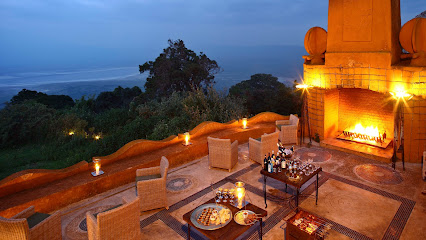
Ngorongoro Lodge member of Meliá Collection
24.6 km
Discover luxury and adventure at Ngorongoro Lodge, an oasis nestled in the breathtaking Ngorongoro Conservation Area, Tanzania.

Ngorongoro Rhino Lodge
26.6 km
Experience the tranquility and adventure at Ngorongoro Rhino Lodge, your gateway to Tanzania's stunning Ngorongoro Crater.

Lemala Ngorongoro Tented Camp
29.2 km
Immerse yourself in the breathtaking beauty of Ngorongoro Crater at Lemala Ngorongoro Tented Camp, where luxury meets nature in Tanzania's wildlife paradise.

Ngorongoro Lions Paw by Karibu Camps & Lodges
31.8 km
Discover the breathtaking beauty and unique wildlife of Ngorongoro Crater at Ngorongoro Lions Paw, your luxurious lodge in Tanzania's natural paradise.

Sanctuary Ngorongoro Crater Camp Tanzania
32.0 km
Discover the breathtaking landscapes and incredible wildlife of Tanzania at Sanctuary Ngorongoro Crater Camp, where luxury meets nature.

The Highlands, Ngorongoro
33.1 km
Discover the ultimate blend of luxury and adventure at The Highlands, Ngorongoro, where breathtaking views and wildlife encounters await.

Crater Highlands
33.4 km
Explore the breathtaking landscapes and rich biodiversity of Crater Highlands, a stunning destination for nature lovers in Tanzania.

Unmissable attractions to see
Ngorongoro Crater
3.4 km
Experience the breathtaking beauty and diverse wildlife of Ngorongoro Crater, a UNESCO World Heritage Site and a must-visit destination in Tanzania.

Olduvai Gorge Monument & Museum
3.8 km
Explore the Cradle of Mankind at Olduvai Gorge Monument & Museum, where history and breathtaking scenery intertwine.

Olduvai Gorge Museum
8.4 km
Discover the rich history of humanity at the Olduvai Gorge Museum in Tanzania, where the past meets the stunning landscapes of the Ngorongoro Conservation Area.

Leakey Camp Living Museum.
9.7 km
Explore the rich archaeological heritage of Tanzania at Leakey Camp Living Museum, where history comes alive through engaging exhibits and immersive experiences.

Massai Dorf
14.0 km
Experience the vibrant traditions of the Maasai people at the Massai Dorf, a unique cultural attraction in Tanzania's stunning Malanja Depression.

Ngorongoro Entrance Gate
14.5 km
Explore the stunning Ngorongoro Entrance Gate, the gateway to Tanzania's breathtaking Ngorongoro Crater, rich in wildlife and natural beauty.

Nomad camping
15.5 km
Experience the beauty of nature at Nomad Camping in Malanja Depression, a tranquil escape for adventure seekers in Tanzania's breathtaking landscapes.

Magnetic Shifting Sands of Olduvai Gorge
16.1 km
Discover the Magnetic Shifting Sands of Olduvai Gorge, a UNESCO site showcasing the wonders of nature and the origins of humankind.

Picknic site
18.0 km
Experience the tranquil beauty of Picknic Site in Malanja Depression, a serene escape perfect for nature lovers and picnicking enthusiasts.
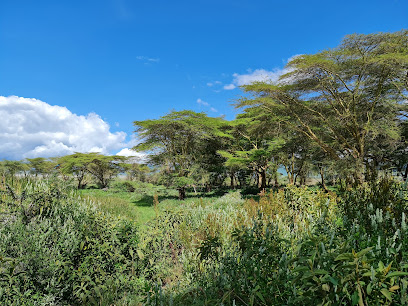
Project T Fountain
20.1 km
Experience tranquility at Project T Fountain, a beautiful park in Esirwa, Tanzania, perfect for relaxation and enjoying nature's beauty.

Ngorongoro crater national park
21.4 km
Discover the breathtaking landscapes and rich wildlife of Ngorongoro Crater National Park, a UNESCO World Heritage Site in Tanzania.
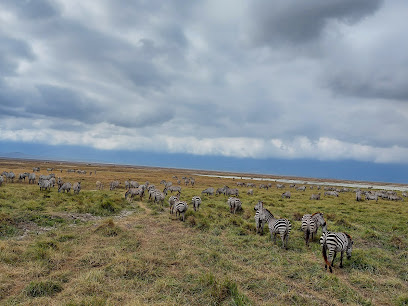
Mandusi Swamp
21.8 km
Explore the serene beauty of Mandusi Swamp in Mti Mmoja, Tanzania, a tranquil park brimming with wildlife and natural wonders.

Lake Magadi
22.4 km
Experience the surreal beauty of Lake Magadi, a vibrant salt lake in Tanzania, teeming with wildlife and stunning landscapes.

Lerai Forest NCA
22.8 km
Explore the lush landscapes and diverse wildlife of Lerai Forest NCA in Ngorongoro, a hidden gem for nature lovers and adventurous travelers.

ngorongoro conservation area authority headquater
23.1 km
Experience the breathtaking landscapes and vibrant wildlife of Ngorongoro Conservation Area, a must-visit UNESCO World Heritage Site in Tanzania.

Essential places to dine
Ngorogoro Tortilis Camp
14.8 km
Discover luxury in nature at Ngorongoro Tortilis Camp - your gateway to Tanzania's breathtaking wildlife and scenic beauty.

The Retreat at Ngorongoro
41.3 km
Discover unparalleled luxury and stunning views at The Retreat at Ngorongoro—your gateway to Tanzania’s majestic landscapes.

Madiba Café & Restaurant
44.7 km
Discover authentic Tanzanian cuisine at Madiba Café & Restaurant in Karatu – where every meal tells a story.

Food Lovers Karatu
44.9 km
Experience the authentic tastes of Tanzania at Food Lovers Karatu - where every meal tells a story.

Lake Ndutu Luxury Tented Lodge
45.3 km
Discover the ultimate blend of luxury and adventure at Lake Ndutu Luxury Tented Lodge in Tanzania's stunning wilderness.

Ol Mesera Restaurant
58.0 km
Discover innovative Tanzanian cuisine at Ol Mesera Restaurant in Mto Wa Mbu – where tradition meets creativity.

Heart & Soul Lodge Manyara
58.9 km
Discover tranquility and natural beauty at Heart & Soul Lodge Manyara - your perfect escape in Tanzania's breathtaking landscapes.

Manyara Best View Lodge
60.0 km
Discover tranquility and stunning vistas at Manyara Best View Lodge, your gateway to Tanzania's breathtaking landscapes and wildlife adventures.

Manyara Safari Lodge
61.1 km
Discover wildlife wonders and breathtaking views at Manyara Safari Lodge – your gateway to Tanzania's natural beauty.

Cafe La Aziz
62.8 km
Discover authentic Tanzanian flavors at Café La Aziz in Mto Wa Mbu – a vibrant restaurant offering delicious local cuisine in a welcoming atmosphere.

Cafe Kabisa
63.4 km
Discover Café Kabisa in Mto Wa Mbu - A perfect blend of local flavors and warm hospitality amidst stunning scenery.

Taste Poa Cafe
63.5 km
Discover Taste Poa Cafe in Mto wa Mbu: A culinary haven blending local flavors with international favorites for every traveler.

Lucy Chakula
64.0 km
Discover authentic Tanzanian cuisine at Lucy Chakula - where every meal tells a story of flavor and tradition.

Jungle Pearl Resort
66.6 km
Experience luxury and tranquility at Jungle Pearl Resort - your perfect escape in Tanzania's breathtaking nature.

Lake Manyara picnic site
73.1 km
Experience serene picnicking amidst stunning landscapes and diverse wildlife at Lake Manyara Picnic Site in Tanzania.

Markets, malls and hidden boutiques
The Tanzanite Experience - Ngorongoro Serena Safari Lodge
19.3 km
Discover the beauty of Tanzanite at The Tanzanite Experience, nestled in the breathtaking Ngorongoro Crater's serene landscapes.

Simba camp site dining area
21.9 km
Discover the serene charm of Simba Camp Site Dining Area, where delightful coffee meets breathtaking nature in Tanzania.

Olorukoti Boma
23.4 km
Explore Olorukoti Boma, a unique home goods store in Tanzania, showcasing handcrafted treasures that celebrate local culture and artistry.

The Tanzanite Experience - The Manor at Ngorongoro
37.0 km
Explore the stunning world of Tanzanite gemstones at The Tanzanite Experience in Ngorongoro, where elegance meets nature's beauty.

HAKUNA MATAYA Gallery Shop
41.9 km
Explore HAKUNA MATAYA Gallery Shop in Karatu for authentic Tanzanian souvenirs and support local artisans with every purchase.

Tanzanite Coffee Cafe
43.3 km
Experience the essence of Tanzania at Tanzanite Coffee Cafe, where every cup of coffee tells a story of local heritage and flavor.

Madame's Store
44.4 km
Discover the local charm of Madame's Store in Karatu, where convenience meets culture with unique crafts and essentials.
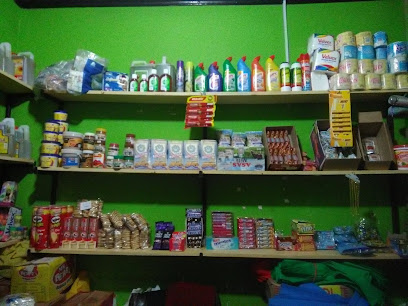
Truddy's store
44.5 km
Explore Truddy's Store in Karatu for a delightful blend of local crafts, delicious cuisine, and an authentic Tanzanian shopping experience.

Martina stationary,Cakes point & Decorations
44.5 km
Explore Martina Stationary in Karatu for unique stationery, delicious cakes, and festive decorations, perfect for every creative celebration.
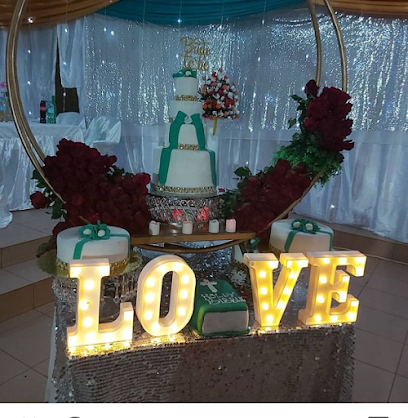
Megha Internet Cafe & Stationary
44.5 km
Experience the fusion of connectivity and local culture at Megha Internet Cafe & Stationary in Karatu, your go-to spot for stationery and high-speed internet.

Samaki point karatu
44.5 km
Discover the freshest seafood at Samaki Point in Karatu, where quality meets local flavors in an unforgettable culinary experience.

Ambrose
44.5 km
Explore Ambrose, the ultimate destination for stylish and durable work clothing that meets all your professional needs.

Living Love Foundation
44.5 km
Explore the Living Love Foundation in Tanzania – a thrift store with a mission, offering unique finds and supporting community initiatives.

Bashay Lodge
44.6 km
Experience the serene beauty and adventure of Tanzania at Bashay Lodge, your perfect base for exploring the Serengeti and Ngorongoro Crater.

Neema Collections
44.6 km
Explore Neema Collections in Karatu for unique, handcrafted clothing and accessories that reflect the rich culture of Tanzania.

Essential bars & hidden hideouts
Pakulala Luxury Safari Camp
21.2 km
Experience the wild beauty of Tanzania at Pakulala Luxury Safari Camp, where luxury meets adventure in the Ngorongoro Conservation Area.

The Manor at Ngorongoro
39.0 km
Discover the elegance of The Manor at Ngorongoro, a luxurious hotel surrounded by Tanzania's breathtaking natural beauty and rich wildlife.

Crater Forest Tented Camp
43.2 km
Discover the perfect blend of comfort and wilderness at Crater Forest Tented Camp in Tanzania's breathtaking landscapes.

Karatu Green Park
43.9 km
Discover relaxation and local charm at Karatu Green Park, a vibrant bar in the heart of Tanzania's scenic Karatu region.

Redstone karatu
44.4 km
Discover the heart of Arusha at Redstone Karatu, where vibrant culture meets culinary delight in a lively lounge atmosphere.

Golden Sparrow Lounge Karatu
44.6 km
Experience the taste of Tanzania at Golden Sparrow Lounge in Karatu, where local flavors meet international flair in a welcoming atmosphere.

Africa Safari South Serengeti Ndutu
44.8 km
Discover the enchanting wildlife and stunning landscapes at Africa Safari South Serengeti Ndutu, your gateway to the heart of the Serengeti.
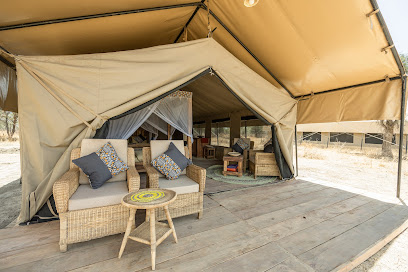
Waah pub
44.8 km
Discover the lively Waah Pub in Karatu, where great drinks, local cuisine, and a vibrant atmosphere await every visitor.

Marula Bar Karatu
44.9 km
Discover the lively atmosphere of Marula Bar in Karatu, where refreshing drinks and local vibes come together for an unforgettable experience.

KARATU REST HOUSE
45.0 km
Discover the charm of Karatu at Karatu Rest House, your perfect lounge retreat in Tanzania's breathtaking landscapes.

Lilac Oasis
47.1 km
Experience the culinary excellence of Lilac Oasis in Karatu, where grilled delicacies meet local flavors in a warm and inviting atmosphere.

Double M Bar
62.5 km
Discover the vibrant atmosphere of Double M Bar in Mto Wa Mbu, where friendly faces and refreshing drinks await every traveler.

Jack's Pub Mto Wa Mbu
62.7 km
Jack's Pub in Mto Wa Mbu: Enjoy refreshing drinks in a lively atmosphere while experiencing local culture in Tanzania.

C and G Pub
62.8 km
Experience the vibrant nightlife and local culture at C and G Pub in Mto Wa Mbu, Tanzania, the perfect spot for relaxation and socializing.

SAFARI PARK
62.9 km
Discover the thrill of wildlife encounters and local culture at Safari Park in Mto Wa Mbu, a must-visit destination for every traveler.




